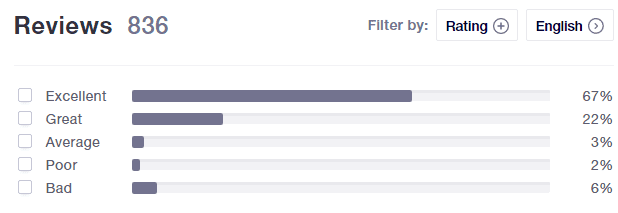Recurrent swelling may suggest an underlying issue with the kidneys, liver, or heart and should be seen by a doctor if continuing for more than two days in a row. Many of the long-term conditions of the eye that are related to alcohol abuse are irreversible. Heavy drinkers or people who have an alcohol abuse disorder are at a much higher risk for lasting eye damage. A Journal of Ophthalmology study found that night vision gets worse after drinking in both men and women.
Color Vision Changes
Bloodshot eyes, or red eyes, is one of the most common telltale signs of a heavy drinker. Bloodshot eyes are a result of extreme dilation of the blood vessels on the surface of the eye, called the sclera, resulting in a red tint, which is caused by heavy drinking. Heavy drinkers or individuals that drink often put themselves at a higher risk for short term and permanent damages. Heavy drinking can also lead to other bodily risks, such as liver damage which is closely related to eye health. This usually subsides over a short amount of time once a person stops drinking.
Long-term effects
With the right knowledge and support, turning the page to a healthier chapter is entirely possible! Stay curious, stay informed, and give your eyes (and the rest of your body!) the care they deserve and the opportunity to thrive. Long-term abuse of alcohol can also lead to toxic amblyopia or vision loss.
- Alcoholic face is a series of obvious facial changes from excessive alcohol use.
- In short, conditions like macular degeneration and optic neuropathy, which are common in older people, are more likely to be present in a person who has an alcohol addiction.
- This is reflected through metabolism, oxidative stress, and inflammation.
- Bright lights may become uncomfortable or painful to the eyes.
Alcohol and Cataract
” As humans, we start “speaking” with our eyes long before we even know what words are. From the “shared gaze” of infants and their caregivers to the connection we feel when looking into the eyes of a romantic partner, cocaine addiction one of the main ways we connect to others is through sight. It’s no wonder that anything powerful enough to affect our body and mind — like alcohol — will leave an imprint on something as sensitive as our eyes.
Eye movements and drinking
The condition here is uncomfortable and occurs with the slightest excessiveness in consumption. This is only a minor transient issue compared to the other chronic effects. It is a fact, not widely aware of, that vision can be affected by drugs and alcohol. Chronic alcohol abuse takes a toll on overall health, weakening the immune system’s function. As a result, the body is more susceptible to infections, including eye infections.
Alcohol and eyesight are connected, and even light alcohol consumption can impair the eyes and affect vision. Alcohol is a diuretic, which means it removes water from the body by making you urinate frequently. In the short term, this can have a dehydrating effect, leaving the eyes dry and irritated. In fact, dry eyes im bored and drinking gives me something to do is a common complaint among drinkers, and chronic alcohol abuse can lead to the development of dry eye syndrome. Intoxication means the effect of acute consumption of alcohol on different physiologic processes in the body. However, change in visual functions have always been focused in ethanol intoxications.
Are alcoholics skinny?
However, in the case of alcohol addiction, otherwise known as alcoholism, it can lead to long-term effects that include but are not limited to continual eye redness. Alcohol remains in the body until the liver finally clears it out. At this time, it causes many eye effects, including redness and blurred vision.
Light consumption of alcohol probably won’t have any lasting effects to your eyes but excessive and heavy drinking could potentially damage your eyesight. Drinking can cause short- and long-term challenges with eye health and vision, including a condition known as dry eye disease (DED). The condition known as scleral icterus causes the whites of the eyes to turn yellow due to an accumulation of bilirubin in the blood. Bilirubin is a natural, yellow-colored byproduct of red-blood cell breakdown and is eliminated by the liver.
Cirrhosis occurs when the liver has been inflamed for a long time, leading to scarring and loss of function. Cirrhosis damage is irreversible, but a person can prevent further damage by continuing to avoid alcohol. Alcoholic hepatitis usually progresses to cirrhosis if a person continues to drink alcohol. Hepatitis heals in a person who stops drinking alcohol, but any cirrhosis does not reverse. It can be easy for someone to dismiss the early symptoms as the effects of a stomach bug or general malaise. However, leaving these symptoms undiagnosed and untreated — especially while continuing to consume alcohol — can lead to a faster progression of liver disease over time.
Heavy alcohol consumption is more than one drink per day for women and two drinks per day for men. Age-related macular degeneration (AMD) is a disease that causes the central portion of the retina, or macula, to wear down. AMD is the leading cause of permanent vision loss and gets worse over time. Heavy consumption of alcohol can cause damage to the retina and increase the risk for AMD.
The combination of alcohol and eye pain is an indicator that something is not quite right. Nonalcoholic fatty liver disease, often called NAFLD, is a liver problem that affects people who drink little to no alcohol. It is seen most often in people who are overweight or obese. Compared with a healthy liver (top), a fatty liver (bottom) appears bigger and discolored.
However, some people get NAFLD even if they do not have any risk factors. Otherwise known as alcohol counseling, this treatment method involves getting into therapy with antidepressants and alcohol interactions licensed therapists. Mainly, this involves approaches that aim at building motivation to prevent further drinking and learning skills to help cope and prevent a relapse.
The effects may be short term, such as blurred or double vision, or they may be long term and potentially permanent. After withdrawal, alcohol addiction treatment should involve therapy to address root issues that led to alcohol abuse. Chronic alcohol consumption can contribute to dry eye syndrome, causing discomfort, irritation, and a gritty sensation in the eyes due to decreased tear production. If you experience persistent eye problems due to alcohol consumption or have experienced significant vision changes, visit an eye care practitioner immediately. The earlier eye issues are diagnosed and alcohol use is stopped, the better the long-term prognosis.
There are rare cases where alcohol causes an allergic reaction to the eyesight. Therefore, it is also advised to be aware of the various alcohol allergy hives. AMD may warrant injections (anti-VEGF), photodynamic therapy, or laser treatment to slow its progression and limit vision loss. Retinal disorders may be treated with injections, laser therapy, or surgery.
Experts don’t know exactly why fat builds up in some livers and not others. They also don’t fully understand why some fatty livers turn into NASH. It sits mainly in the upper right portion of the stomach area, above the stomach. All content on the Academy’s website is protected by copyright law and the Terms of Service. This content may not be reproduced, copied, or put into any artificial intelligence program, including large language and generative AI models, without permission from the Academy. In a 2015 American Journal of Preventive Medicine, excessive use of alcohol cost the country $249.0 billion in 2010.
This is a gradual phenomenon which causes the eyes to lose color over a long duration of time. Eventually, the eyes get almost blind, and the eyesight is irrevocably lost. The deficiency, therefore, can cause weakening of the eye muscles. If the condition prolongs, it can further result in corneal perforation. It can even lead to night blindness and, in some cases, complete loss of eyesight.
The above data mentions the various diseases pertinent to alcohol and vision. The short-term spectrum consists of diseases like Myokymia and pupil reaction degradation. However, the long-term list contains diseases like cataract and amblyopia.



















